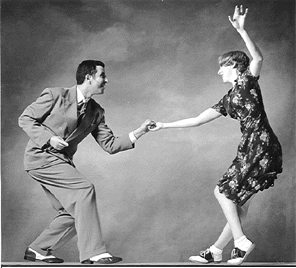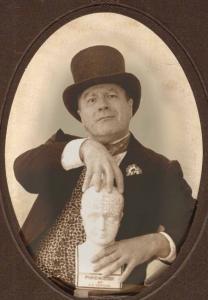Walter's Random Musings
Be Awesome or Sit Down: Musings on Our Spectator Culture
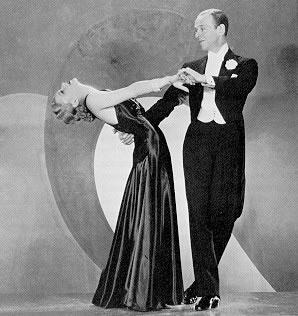 A friend posted an article on Facebook a while back that lamented the serious decline in singing in American churches. The gist of it was not that American churches had succumbed to the teachings of some harsh, pious, music-hating sect - there was still plenty of music, but it wasn't the congregation providing it. They hadn't been told not to sing, quite the contrary, but the ones leading the music were very proficient well-amplified musicians performing complex music, with frequent new pieces to keep it "fresh" and demonstrate their musical chops. The poor congregations, so it would appear, just can't keep up.
A friend posted an article on Facebook a while back that lamented the serious decline in singing in American churches. The gist of it was not that American churches had succumbed to the teachings of some harsh, pious, music-hating sect - there was still plenty of music, but it wasn't the congregation providing it. They hadn't been told not to sing, quite the contrary, but the ones leading the music were very proficient well-amplified musicians performing complex music, with frequent new pieces to keep it "fresh" and demonstrate their musical chops. The poor congregations, so it would appear, just can't keep up.
The days of old Father Tom, in his creaky baritone, accompanied by an equally creaky organ, leading the flock in the umpteenth rendition of the Doxology appear to be largely passed in many congregations.
Their "joyful noise" doesn't need a bunch of untutored parishioners to be awesome.
This is not limited to church. In fact, adults don't sing in company anymore, outside the occasional binge of booze-enhanced Karaoke - unless they are pretty darn good.
Swing Dance in the LA Area
Here is a listing of most of the highlights of the Swing scene in the Los Angeles area. Most of it is courtesy of Chris Gauntt. This covers frequent events, and not annual things like the Avalon Ball. I will add to it and edit based on comments and suggestions I receive.
Cicada Club
Downtown Los Angeles. A recurring but not consistently scheduled event in a beautiful Art Deco nightclub, featuring different live bands with themes ranging from Roaring '20s to Latin, to '40s Swing to 1960s big band. Check their calendar for the next show.
http://www.cicadaclub.com/main.asp
Waltz in the Jazz Age
A video pastiche of Waltzing in the 1920s and 30s.
2. Mid 1920s - The Charleston Era
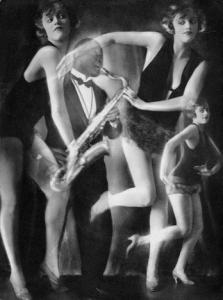 Emerging around 1923, the Charleston was a ground-breaking dance in its time. It was enthusiastically embraced by the youth of the Jazz Age, who found in it an outlet for their desire for novelty, exuberance and a total break with the social constraints of the past. It was also revolutionary in its strong solo elements, where a dancer would perform without a partner, or physically separated from a partner, in a way that was quite a revelation for the white dancers of the early 20th Century.
Emerging around 1923, the Charleston was a ground-breaking dance in its time. It was enthusiastically embraced by the youth of the Jazz Age, who found in it an outlet for their desire for novelty, exuberance and a total break with the social constraints of the past. It was also revolutionary in its strong solo elements, where a dancer would perform without a partner, or physically separated from a partner, in a way that was quite a revelation for the white dancers of the early 20th Century.
In the heady days of the Roaring '20s, it even made occasional forays into the dancing of adventurous minded adults in a way that later youth dances did not. In 1926, you might have seen a 35 year old succumbing to an occasional fit of Charleston. In 1936, was far less likely you would have seen a 35 year old dancing a Lindy Hop.
There are a few widespread notions about the Charleston that I hope you can, if you happen to entertain these notions, set aside while reading this.
Charleston Misconceptions
- Charleston was the dominant dance of the Jazz Age
- The Charleston was nearly always danced solo or with a couple doing individual solos in the vicinity of one another
- The Charleston was defined by a small set of specific steps. If you didn't do those steps, you weren't doing a Charleston
2. Youth Dancing in the Jazz Age
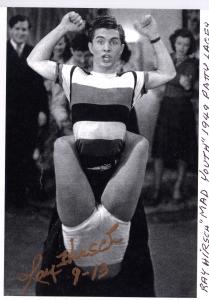 I present here a quick timeline, via some films I have come across in my travels that illustrate the sorts of dances that were popular with the young'ns in the '10s, '20s and '30s. Most adults gave these up when they reached 25 or so, leaving the kicks and twirling skirts in favor of something a bit more sophisticated; but while they were young, those kids of the Jazz Age really knew how to cut a rug.
I present here a quick timeline, via some films I have come across in my travels that illustrate the sorts of dances that were popular with the young'ns in the '10s, '20s and '30s. Most adults gave these up when they reached 25 or so, leaving the kicks and twirling skirts in favor of something a bit more sophisticated; but while they were young, those kids of the Jazz Age really knew how to cut a rug.
The thing that most distinguished "Youth Dances" from "Adult Dances", other than their relative athleticism, was not some fine point of technique or special step, it was the spirit of showing off. Adult dances were very pointedly not about showmanship. They were partner focused, and adult dancers almost never separated to do underarm turns or other showy moves. Kids on the other hand, were all about the showy moves, all about "Hey, look at me!". An adult dance was focused on the partner. A youth dance on the audience of peers.
The connections between these dances are pretty clear, as they progressed in a parallel track with the more mainstream Foxtrot and other ballroom dances. In fact, I would assert that they are all really just different flavors the same dance. "Youth Dance" happened when kids started inventing energetic, showy moves and wiggling their bodies to jazzy music. The specific combinations of moves and style of wiggling evolved over time, but there really are no clean breaks, just a gradual evolution with new moves being added to the mix and old moves falling out of fashion. We have some convenient reference points we might call "Charleston" or "Collegiate" or "Shag" which are helpful today but, at the chaotic time of their invention, lacked the clear definitions, precise terminology and sense of orthodoxy we moderns so often want to impose on the dances of the past.
I will hit on just a few clear reference points that give a sense of the flow. This collection is nothing like comprehensive - and never could be since only a tiny fraction of what the kids of the Jazz Age were inventing ever found its way to film. Further, the vagaries of copyright limit what I can post here. I present these films with a minimum of commentary, and will mostly let them speak for themselves.
Social Dancing and the Art of Conversation
 "Part of the joy of dancing is conversation. Trouble is, some men can't talk and dance at the same time." - Ginger Rogers
"Part of the joy of dancing is conversation. Trouble is, some men can't talk and dance at the same time." - Ginger Rogers
A very brief observation:
There's a key element of social dance, as it is actually practiced, that really gets short shrift. Dance manuals ignore it and you're not likely to hear about it in a dance class.
I recently had one of those "aha" moments in looking at photos from a Jazz Age dance event. Several of them were of me and my partner, on dance "automatic pilot", having a pleasant conversation. That "aha" was that conversation, in real social dance, is not a digression. It isn't something you do that detracts from the business at hand: the serious business of dancing. It is intrinsic to the "social" part of social dancing. It is every bit as legitimate a use of your dance floor time as a step routine or dance figure.
So, whether your partner is a lover, a friend, an acquaintance or someone you just met, if you have something to say, say it. If you don't, then just dance. The time is your own to do with as you will. There really is nowhere else that is quite as public, and yet as intimate and private as a dance floor. What ever you have to say, be it trivial or profound, there's probably no better time for it. You won't be overheard.
I don't really need to exhort people to do this. I'm sure you all do it anyway. Banter (witty or otherwise), declarations of love, profound or shallow observations, jokes, dinner plans, relationship talk, gossip, the weather, it's all fair game for that most private of public conversations; and it always has been.
How To Not Give A Tedious, Terrible PowerPoint Presentation
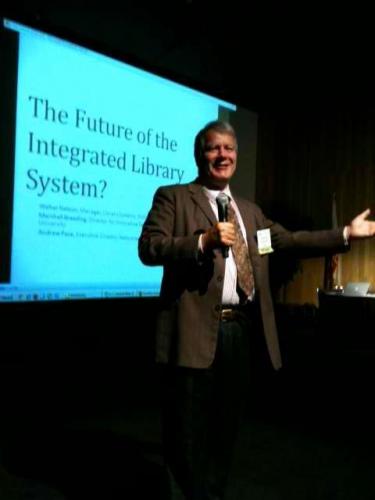 I realize that the title of this piece promises more than it may, in fact, deliver. Reading this will not warranty you against giving a bad presentation. It might help though.
I realize that the title of this piece promises more than it may, in fact, deliver. Reading this will not warranty you against giving a bad presentation. It might help though.
Here are a few things I have learned over the years, done by me and by other presenters - some good, some not so good, and some disastrous. However, each person is different, and different things work better for some folks than others. Your mileage may vary.
This is about the substance and style of your presentation. For issues of technology, go here.
Relax. It's not that bad
There are a lot of "rules" here, but many good presentations and good presenters break one or more of them. If you know your topic, and you care about that topic, and you can convey that enthusiasm to your audience, you'll probably do fine, even if you break a rule or two.
Make a Point
You can have one or multiple points to make, but try to present some insights about your topic that your audience may not have considered. Do not just say "Here is a thing", but try to say "And here is why that thing is interesting, and here's what that thing says about a broader issue and relates to other things"
Be Passionate
Care about your topic as much as it is possible to care about your topic. Your enthusiasm for what you are saying is the key to engaging your audience. This works best if you are presenting on a topic that is near and dear to you, when the passion should flow naturally. If you are presenting the next fiscal year spending projections, do your best to convey some enthusiasm, or at least your sense of why it's important, to your audience - but don't be phony or forced about it, as that will always backfire.
Places for "Vintage" Style Social Dancing in Paris
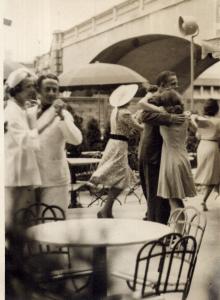 I recently asked my international community of Facebook friends for suggestions on where one could do old fashioned social dancing in Paris. By this I mean the dances of the first half of the 20th Century, back into the 19th Century (Waltz, Tango, Java, Swing, Foxtrot etc.).
I recently asked my international community of Facebook friends for suggestions on where one could do old fashioned social dancing in Paris. By this I mean the dances of the first half of the 20th Century, back into the 19th Century (Waltz, Tango, Java, Swing, Foxtrot etc.).
It's been a bit of a challenge just Googling it, as I mostly find "Dance Clubs" where deafening Hip Hop and the like is the norm, and that is not, as we said in my youth "my scene" (it wasn't my scene back in the '60s either - so it's not just that I'm old, which I am).
I've also found places that advertise "Bal Musette" which, from what I have seen on their YouTube videos, they define not as dancing but as sitting around a table singing along with Edith Piaf's greatest hits.
So here are my friends' excellent and well-informed suggestions, compiled here so I can share them and find them again later, as it is deuced hard to find anything on Facebook after it has been there a while.
It would appear that the sort of dance that particularly interests me is found in the "Thé Dansant" (Tea Dance) format, which happens in the afternoon and is therefore quite congenial to old farts like me.
This information was gathered in June of 2014. I would strongly advise checking the websites and perhaps contacting the venues to ensure that they are doing what you want to do, when you want to do it.
When I was able to find video of the place on YouTube, I posted it below.
Businesses and Public Events
Le Balajo (Thanks Angela)
http://www.balajo.fr/en/accueil.php
Mostly Salsa and modern dances, but it looks like they have "Every Monday from 2pm to 7pm, Old Fashion Music (Thé Dansant) with Liliane and Jo."
No video of their tea dances available - just the Disco
Where People Danced in the Jazz Age
In getting a sense of the dances of the Jazz Age, it's helpful to also get a feeling for where people were dancing.
In short, almost everyone danced and they danced almost everywhere. Many public events had provisions for dancing, and there were frequent private dances of all descriptions. They covered the whole gamut of social class and ethnicity, and were as formal or informal as was the habit within that group: though nearly everyone, rich or poor, black, white or brown, would at least wear dresses, coats and ties to go out in public and dance, even if they weren't part of a socioeconomic group that could afford "evening dress".
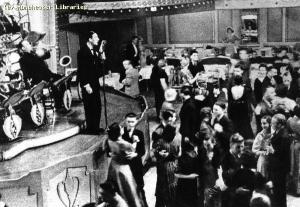 Colleges and high schools had frequent dances. Clubs (especially "country clubs") and other private organizations like fraternal organizations (Masons, Elks, Grange, VFW, Woman's Clubs etc.) threw frequent dances for their constituencies. Hosting a dance seemed to be a prime way for a group to affirm its identity.
Colleges and high schools had frequent dances. Clubs (especially "country clubs") and other private organizations like fraternal organizations (Masons, Elks, Grange, VFW, Woman's Clubs etc.) threw frequent dances for their constituencies. Hosting a dance seemed to be a prime way for a group to affirm its identity.
I recently reviewed the old company newsletters of my corporate employer, and was struck by how many formal dinner dances they threw back in the '50s and early '60s for their employees and their families, because when men and women got together, they danced.
Private functions of all types (dinner parties, charity galas, weddings, picnics) frequently included planned or spontaneous dancing, since dancing was enthusiastically pursued in every social class and, with the exception of those who had a religious scruple against it, every element of society. Music could be live (professional or performed by the guests) or provided by a gramophone or radio.
As to the public dance scene: the following categorization of public dance venues is based upon a list in "The Taxi Dance Hall: A Sociological Study in Commercialized Recreation & City Life" by Paul Goalby Cressey, 1932. He is describing the dance scene in Chicago in the early '30s, just before the repeal of Prohibition.
My Jazz Age Journey: A Few Thougths on Historical Dance
 The process of recreating the ballroom dances of the Jazz Age has been an eye-opening journey, and has led me to a new (for me) way of dancing that I have come to love. It has also made me question my long-standing assumptions about what it means to dance.
The process of recreating the ballroom dances of the Jazz Age has been an eye-opening journey, and has led me to a new (for me) way of dancing that I have come to love. It has also made me question my long-standing assumptions about what it means to dance.
Background
A couple of years ago I came to the realization that the internet is now brimming with film footage from the Jazz Age showing people dancing. Just a few years ago, original dance footage was a big deal to get, requiring much time, effort and expense to obtain a few brief snippets of footage. Now, almost overnight, we are awash in it. The Swing community sussed to this fact some time ago, but the vintage ballroom folks (myself included) were pretty much oblivious.
When I do a thing, I tend to overdo it, and this has been no exception. I tracked down hundreds of clips from old movies, and used them to construct a picture of the of the dances of the 1920s - 40s; a period I am very interested in as I frequently attend, and occasionally organize "vintage dance" events set in that era. However, I had only the sketchiest of ideas of what was actually done at the time, and as I started to look at the footage, I realized that many of those ideas were not only sketchy but entirely wrong. Much of what I had been taught or assumed about the dance of the time had been filtered through the prism of the modern forms of those dances. The Foxtrot, the Tango, the Waltz are all danced a certain way today, and the natural reflex is to say "Oh, I know the Foxtrot and the Foxtrot I know must be what was danced".
This is, of course, wrong because dances evolve over time; but it put me in a rather unique position. To learn these dances, I could not just take a class. While much of what I might learn in a regular ballroom dance class could be applicable; most of the modern orthodoxy and technique was clearly, from looking at the films, not applicable. I was going to have to rely on films and, to a lesser extent, books to be my teachers; along with the essential help of my wife and the many other women who have been my partners and collaborators in making sense of all this.

